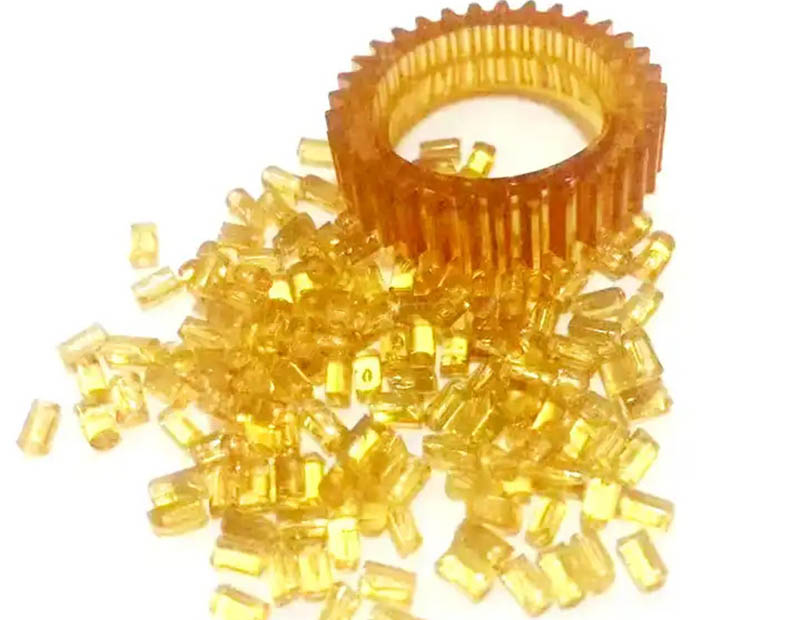Polyetherimide (PEI) Plastic Material: Properties, Applications, and Maintenance
Introduction to Polyetherimide (PEI)
Polyetherimide (PEI), commercially known as Ultem®, is an amorphous, High-performance thermoplastic renowned for its exceptional thermal stability, mechanical strength, and chemical resistance. Developed by General Electric in the 1980s, PEI belongs to the polyimide family and is synthesized through a condensation reaction between bisphenol A dianhydride and m-phenylenediamine. Its unique molecular structure imparts a combination of properties that make it suitable for demanding applications across aerospace, automotive, medical, and electronics industries.

Key Characteristics of PEI
Thermal Properties
PEI exhibits outstanding thermal stability with a glass transition temperature (Tg) of 217°C and a continuous service temperature of 170°C. It has a UL 94 flammability rating of V-0, making it self-extinguishing with minimal smoke emission. The coefficient of thermal expansion is 5.6 x 10^-5 /°C, ensuring dimensional stability under thermal cycling.
Mechanical Properties
With a tensile strength of 105 MPa and a flexural modulus of 3.3 GPa, PEI demonstrates remarkable rigidity and load-bearing capacity. Its elongation at break is 60%, indicating good ductility. The material maintains 80% of its mechanical properties at 170°C, outperforming most engineering plastics.
Electrical Properties
PEI has a dielectric strength of 33 kV/mm and a volume resistivity of 10^17 Ω·cm, making it an excellent electrical insulator. Its dissipation factor is 0.0015 at 1 MHz, ensuring minimal energy loss in high-frequency applications.
Chemical Resistance
PEI is resistant to hydrocarbons, alcohols, and halogenated solvents, though it is susceptible to strong acids and bases. It exhibits low water absorption (0.25% over 24 hours), maintaining dimensional stability in humid environments.
Applications of PEI
Aerospace
In aerospace, PEI is used for interior components, seat frames, and ducting systems due to its flame-retardant properties and low smoke emission. Its specific gravity of 1.27 contributes to weight reduction in aircraft.
Medical
PEI's autoclavability (up to 134°C) and biocompatibility make it ideal for surgical instruments, sterilization trays, and dental devices. Its transparency allows for use in imaging equipment components.
Electronics
In electronics, PEI is employed in connectors, circuit boards, and semiconductor test sockets due to its high dielectric strength and resistance to solder baths (short-term exposure to 300°C).
Automotive
PEI is used in under-the-hood components, sensor housings, and lighting systems where thermal stability and resistance to automotive fluids are critical.
Industrial
For industrial applications, PEI is utilized in pump components, valve seats, and bearing cages due to its wear resistance and ability to withstand high-pressure environments.
Maintenance and Care of PEI Components
Cleaning Procedures
For routine cleaning, use mild detergents (pH 5-8) and soft cloths to prevent surface scratching. Avoid abrasive cleaners or solvents like acetone which can cause stress cracking.
Thermal Management
While PEI can withstand short-term exposure to 200°C, prolonged operation above 170°C may lead to gradual property degradation. For high-temperature applications, ensure proper heat dissipation through design features like cooling fins.
Mechanical Stress Considerations
Although PEI has good fatigue resistance (10^6 cycles at 20 MPa), avoid continuous dynamic loading near its yield point. For moving parts, maintain lubrication with compatible materials like PTFE or silicone-based lubricants.
Storage Conditions
Store PEI components in UV-protected environments as prolonged sunlight exposure can cause surface yellowing. Maintain relative humidity below 50% and temperature below 40°C to prevent moisture absorption.
Inspection Protocols
Regularly inspect for stress whitening (indicating microcracks) using magnification (10x minimum). For critical components, perform dimensional checks with micrometers (accuracy ±0.001 mm) to detect warpage.
Joining and Repair
PEI can be ultrasonically welded (20 kHz frequency) or bonded with epoxy adhesives (shear strength >15 MPa). For machining repairs, use carbide tools with feed rates of 0.1 mm/rev and cutting speeds of 200 m/min.






